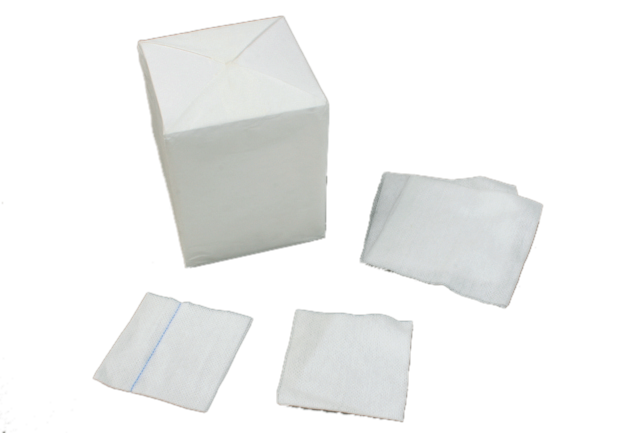
Non-woven Sponges (Non-sterile)
Non-woven sponges are a great solution for general purpose cleaning and dressing of wounds.
Non-woven sponges are a great solution for general purpose cleaning and dressing of wounds. They are made from a variety of materials such as polyester, cotton, or rayon and have a wide range of absorbencies. Non-woven sponges are also available in sterile and non-sterile options.
There are many benefits to using non-woven sponges for general purpose cleaning and dressing of wounds. Non-woven sponges are:
1. Less Likely to Cause Allergic Reactions: Non-woven sponges are made from synthetic materials that are less likely to cause allergic reactions than natural fibers like cotton.
2. More Absorbent: Non-woven sponges are more absorbent than cotton, meaning they can soak up more liquid and dirt from a wound.
3. More Gentle on the Skin: The synthetic fibers in non-woven sponges are much gentler on the skin than harsher natural fibers like wool. This makes them ideal for use on sensitive skin or open wounds.
4. Easy to Use: Non-woven sponges are easy to use thanks to their soft, pliable texture. They can be easily molded around the contours of a wound for thorough cleaning and dressing.
There are a few things to consider when choosing the right sponge for general purpose cleaning and dressing of wounds. The first is the size of the wound. Smaller wounds will require smaller sponges, while larger wounds will need larger sponges. The second thing to consider is the depth of the wound. shallower wounds can be cleaned with thinner sponges, while deeper wounds will require thicker sponges. The third thing to consider is the type of wound. Some wounds may be more delicate than others, and require softer or more absorbent sponges. Once you've considered these factors, you'll be able to choose the right sponge for your needs. Non-woven sponges are a great option for general purpose cleaning and dressing of wounds. They come in a variety of sizes and thicknesses, so you can find the perfect one for your wound. And because they're made from synthetic materials, they're very absorbent and won't irritate delicate skin.
There are many types of wounds that can be treated with a non-woven sponge. These include cuts, scrapes, scratches, burns, and more. Non-woven sponges are a great option for general purpose cleaning and dressing of wounds because they are absorbent, soft, and gentle on the skin. Plus, they are easy to use and can be found in most stores.
Cleaning and dressing a wound with a non-woven sponge is a simple process that can be done at home with just a few supplies. To clean the wound, start by gently washing the area around the wound with soap and water. Then, using a clean non-woven sponge, apply pressure to the wound to remove any dirt or debris. Finally, rinse the wound with clean water. To dress the wound, start by applying a thin layer of antibiotic ointment to the area around the wound. Then, place a clean non-woven sponge over the wound and secure it in place with tape or gauze. Be sure to change the dressing regularly and monitor the wound for signs of infection.